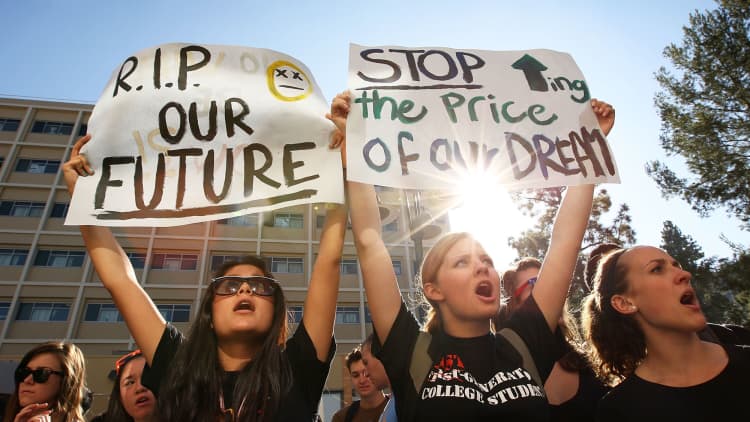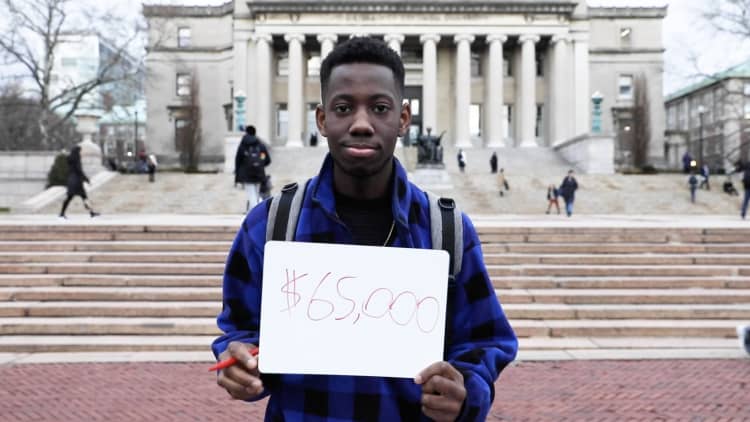When the coronavirus pandemic first swept the United States in March 2020, student debt relief was among the first policies enacted to help struggling Americans. Since March 27, 2020, federal student loan interest rates have been set to 0% and payments have been paused. But the policy is set to expire on Oct. 1, 2021.
On Monday, Democratic Senators Elizabeth Warren, Tina Smith and Edward J. Markey sent letters to the CEOs of all federal student loan servicers requesting information about the steps the companies are taking to transition millions of federal student loan borrowers back into repayments once the moratorium ends.
"Millions of borrowers have had relief from their student loan payments and interest for more than a year during the Covid-19 pandemic – but they now risk being thrown into extraordinary financial hardship when their payments resume," reads the letter, sent to CNBC Make It. "We support canceling $50,000 of debt for each borrower to relieve this burden on our economy, but in the interim, we are requesting information on how your company is preparing for this transition to repayment and the steps it is taking to ensure that it adequately supports borrowers."
Warren previously questioned student loan servicer executives Jack Remondi, CEO of Navient and James Steeley, CEO of the Pennsylvania Higher Education Assistance Agency about their treatment of borrowers during a Senate subcommittee hearing.

Experts like Sarah Sattelmeyer, former director of Pew's student borrower success project and current project director at New America say that when the Department of Education has implemented student loan forbearances in the past, there often is an increase in student loan delinquency when payments resume. She worries borrowers will face similar difficulties this fall.
"When they turn the switch back on, millions of borrowers are going to reenter repayment all at the same time and that's going to strain and overwhelm the system and servicers. And that could lead to negative outcomes," she says, such as missed payments and default.
Sattelmeyer estimates that roughly 9 million borrowers will be reaching out to their servicers when payments resume and that almost 40% of borrowers do not know when their payments will resume.
Additionally, some servicers have reportedly reduced their staffing numbers, including among positions that work with borrowers, during the pandemic.
"If struggling borrowers are dropped back into repayment on their student loans with no adjustments or support, then they could find themselves in default or distress, facing disastrous long-term economic consequences that will echo across generations," warn the senators. "Following past emergency suspensions of student loans during natural disasters, increased numbers of borrowers became delinquent or defaulted on their loans. A wave of student loan defaults would cause long-term damage to borrowers' credit and financial stability and could put a sudden and unnecessary drag on the recovering economy."
Don't miss:



